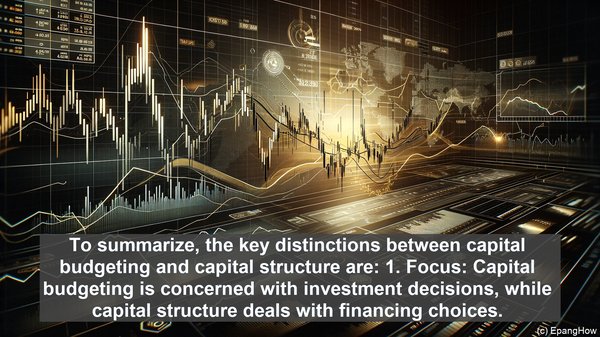Introduction: The Crucial Aspects of Finance
Hello everyone! Finance is a vast field, encompassing numerous concepts and frameworks. Today, we’ll be exploring two such concepts: capital budgeting and capital structure. While they may sound similar, they pertain to distinct aspects of financial decision-making. Let’s dive in!
Capital Budgeting: Investing for the Future
Capital budgeting primarily deals with investment decisions. When a company has excess funds, it must evaluate various projects or assets to invest in. The goal is to select the most lucrative option, one that maximizes returns and aligns with the company’s long-term objectives. This involves assessing the project’s potential cash flows, factoring in the time value of money, and considering the associated risks. By employing techniques like net present value (NPV) or internal rate of return (IRR) analysis, companies can make informed investment choices.

Capital Structure: Balancing Debt and Equity
On the other hand, capital structure revolves around the composition of a company’s financing. When a firm requires funds, it can raise them through debt or equity. Debt involves borrowing money, often from banks or bondholders, while equity refers to ownership shares. The capital structure, then, is the mix of debt and equity a company employs. Striking the right balance is crucial. Debt offers tax advantages and can be cheaper, but it also increases financial risk. Equity, while diluting ownership, provides flexibility and reduces the burden of interest payments. Companies must consider factors like their industry, growth stage, and risk appetite when determining their optimal capital structure.

Key Differences: Capital Budgeting vs. Capital Structure
To summarize, the key distinctions between capital budgeting and capital structure are: 1. Focus: Capital budgeting is concerned with investment decisions, while capital structure deals with financing choices. 2. Time Horizon: Capital budgeting has a long-term perspective, as investments often yield returns over several years. Capital structure, though also long-term, can be adjusted more frequently based on market conditions. 3. Decision-Making: Capital budgeting involves selecting the most profitable investment option. In capital structure, the decision is about the ideal debt-equity ratio. 4. Impact: Capital budgeting decisions directly impact a company’s future cash flows and profitability. Capital structure choices influence its risk profile and financial stability.
